Rocks State Park and Jerusalem Mill
On our next day without rain, John, Laura, and I went to Rocks State Park and Jerusalem Mill Park in Harford County, Maryland.
Rocks has 855 acres of dense forests and massive boulders rising above Deer Creek. The King and Queen Seat, once a ceremonial gathering place of the Susquehannock Indians, is a natural 190 foot rock outcrop. This cliff, reached by scenic trails, affords a view of the rolling hills and farmland of Harford County. Also preserved on park property are many structural remains from the days when the Maryland and Pennsylvania Railroad wound its way through Rocks, helping the farms and quarries of Northern Harford County to prosper.
In Rocks State Park, we went to the Falling Branch area which has Kilgore Falls, Maryland’s second highest free-falling waterfall.
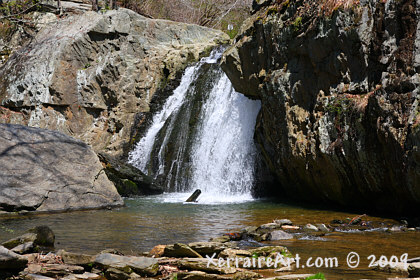
To get to the falls, one has to cross a creek and not fall. Not seen here, John had a slight slip.
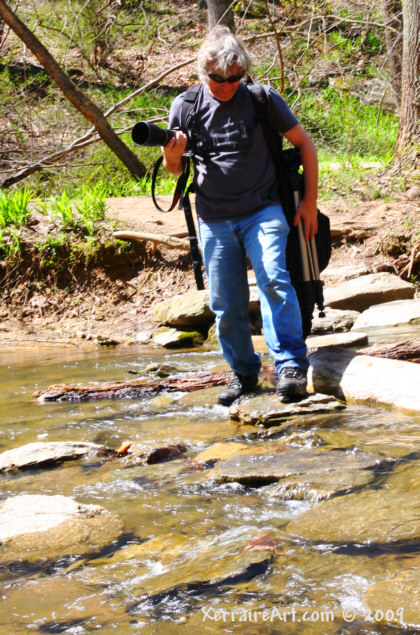

I had to get a photo of John in front of the falls.
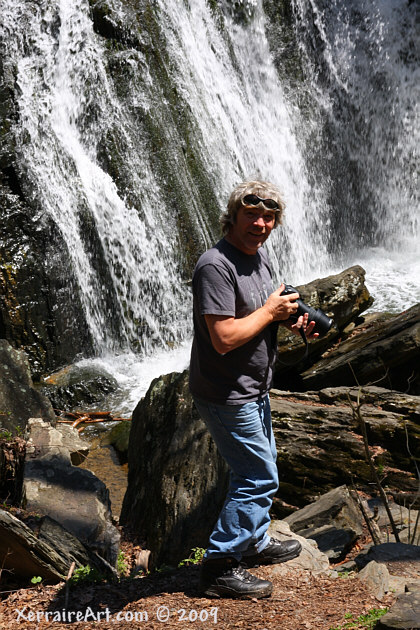
John took photos of the Falls, the birds, and the trees.
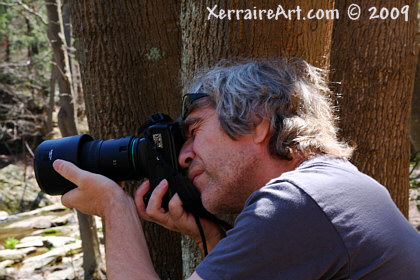
After, we went to Jerusalem Mill.
The 228-year old Jerusalem Mill, once the centerpiece of the thriving Quaker settlement of Jerusalem in the 18th and 19th centuries, operated continuously for nearly two centuries. It is located on the banks of the Little Gunpowder Falls River in Harford County.
Its history began in 1769, when millwright Isaiah Linton and miller David Lee entered into a partnership to build a mill, one of 18 mills built by Linton. Lee and Linton selected a low-lying site along the Little Falls of the Gunpowder on a tract of land called “Jerusalem.” In August of 1772, the project was completed, and David Lee began milling flour under the “White Silk” label for Baltimore and the surrounding areas, and soon after began shipping to locations around the world.
The original mill, known as Lee’s Merchant Mill until the 1870’s, was one of the important early mills in Harford County, and one of the largest in Maryland. It saw great changes in technology and economy through its two centuries of operation. The half-mile long race channeled water in through the west stone wall and out the opposite wall to turn two vertical overshot water wheels. These were later replaced by two horizontal water turbines which turned a vertical shaft driving the machinery above.
The ground floor served as the grinding level with 48-inch French buhrstones. The mill was converted to electricity after a flood broke the dam in 1940. The business evolved from the original merchant milling operation of Lee’s Mill to a combination of services for the local farming community.
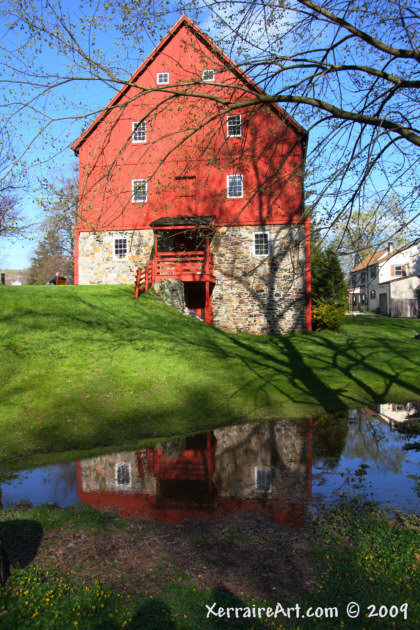
At the end of our walk, we saw the covered bridge.
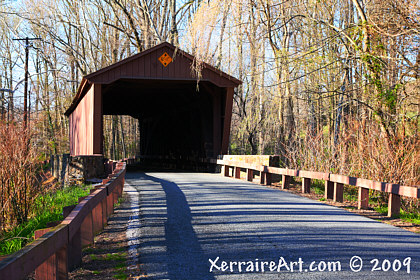
















Hi guys,
Sorry I haven’t been here to comment yet, life and work are just getting in the way at the moment. Good to see you guys are having a great time again. Just one question John – was the slip in the stream as good as the one in King’s park many years ago? 🙂
Cheers
George